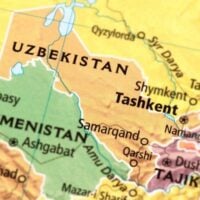Deadline: 20-Apr-23
Are you a landowner and/or have full management control of land? Are you looking to improve, manage or create new woodlands? Can your project promote community involvement? For example, through the planning and provision of footpaths, nature trails, or sculptures? Do you require a grant from £40,000 to £250,000? If you answered yes to these questions, then The Woodland Investment Grant (TWIG) scheme is for you.
A grant scheme intended to create, restore and enhance woodlands in Wales, as part of the Welsh Government’s National Forest programme.
The Woodland Investment Grant (TWIG) is a new programme for landowners to create woodlands for local communities to use and enjoy, as part of the National Forest programme.
These woodlands must have the potential to become part of the National Forest in the future. This means the woodlands must be:
- Well-managed
- Accessible
- Give local communities the opportunity to get involved
Themes
- As part of the National Forest programme, there are three additional themes. Applicants should describe how the project will contribute to at least one of these themes:
- Climate change mitigation and adaptation
- Supporting tourism and the economy
- Supporting or delivering skills and training
What TWIG offers
- The total available funding is £1.9million in the financial year 2022–2023. Future year budgets are likely to be approximately £3m.
- The programme is jointly funded by the Welsh Government and The National Lottery Heritage Fund. This is mainly a fund to carry out capital works.
- A maximum of 25% of each grant can be allocated to revenue spending. In addition, up to 10% of the capital element may be used for project planning and other direct project implementation costs.
- The scheme will offer:
- Grants of £40,000 to £250,000 for woodland projects (exceptional projects costing more than £250,000 may also be considered)
- Up to 100% funding
- Up to two years to deliver the project
- Capital and revenue funding
- large, ambitious and complex projects can use TWIG funding with other Welsh Government grants, as well as other sources of complimentary public and private funding
- a maximum of one TWIG grant per site at any one time (you can make more than one application)
- advice and support from Woodland Liaison Officers to plan your project (these officers come into post throughout 2022–2023, so may not be available during the initial funding round, but please speak to their staff for guidance instead)
- advice and support from them on how to apply
- There will be five rounds of TWIG funding over the next two years.
What they are looking for?
- Your project should:
- Restore, enhance and/or create woodlands
- Deliver accessible woodlands for all to enjoy
- Create a woodland with a plan for future maintenance. Post-project, a single payment to cover five years of maintenance can be included in your grant application. In order to claim this money, you will be required to submit a detailed management plan for the site, on completion of the project (find out more under ‘How to apply’).
- Meet the needs of local people as a public space and contribute to ecosystem services within the local area. For example, addressing biodiversity loss and creating local jobs.
- Demonstrate multiple benefits spanning environmental, social, economic and cultural wellbeing
- They have a particular interest in:
- Urban areas that lack green space
- Areas that will enable connected nature networks across the length and breadth of Wales
- The woodland area must be working towards achieving National Forest outcomes (please read ‘How will they assess applications?’ for more information on these outcomes). There are no limits to the size or arrangement of areas of trees to be planted.
- New plantings could be:
- Developing and creating new large woodlands
- Urban tree planting
- Creating or improving community involvement in, and access to, a woodland a broad corridor of hedgerow or woods to link two existing woodlands
- Complex, ambitious planting projects that span two years
- Improvements to existing woodland could be:
- The adoption of a woodland by the local community
- Thinning
- Installation of footpaths
- Maintenance of degraded access facilities in heavily-used community woodlands
- For all projects, Forest Management Plans are required. If these are not already in place, then the grant can cover the costs of preparing a detailed long-term management plan. However, a basic plan must be submitted with your application. Refer to ‘Actions to take before you apply’ for more information.
Eligibility Criteria
- The scheme is open to any landowners/managers including not-for-profit organisations and private owners. This is provided that you have the right permissions, licences and consents in place to undertake activity.
For more information, visit TWIG.









































